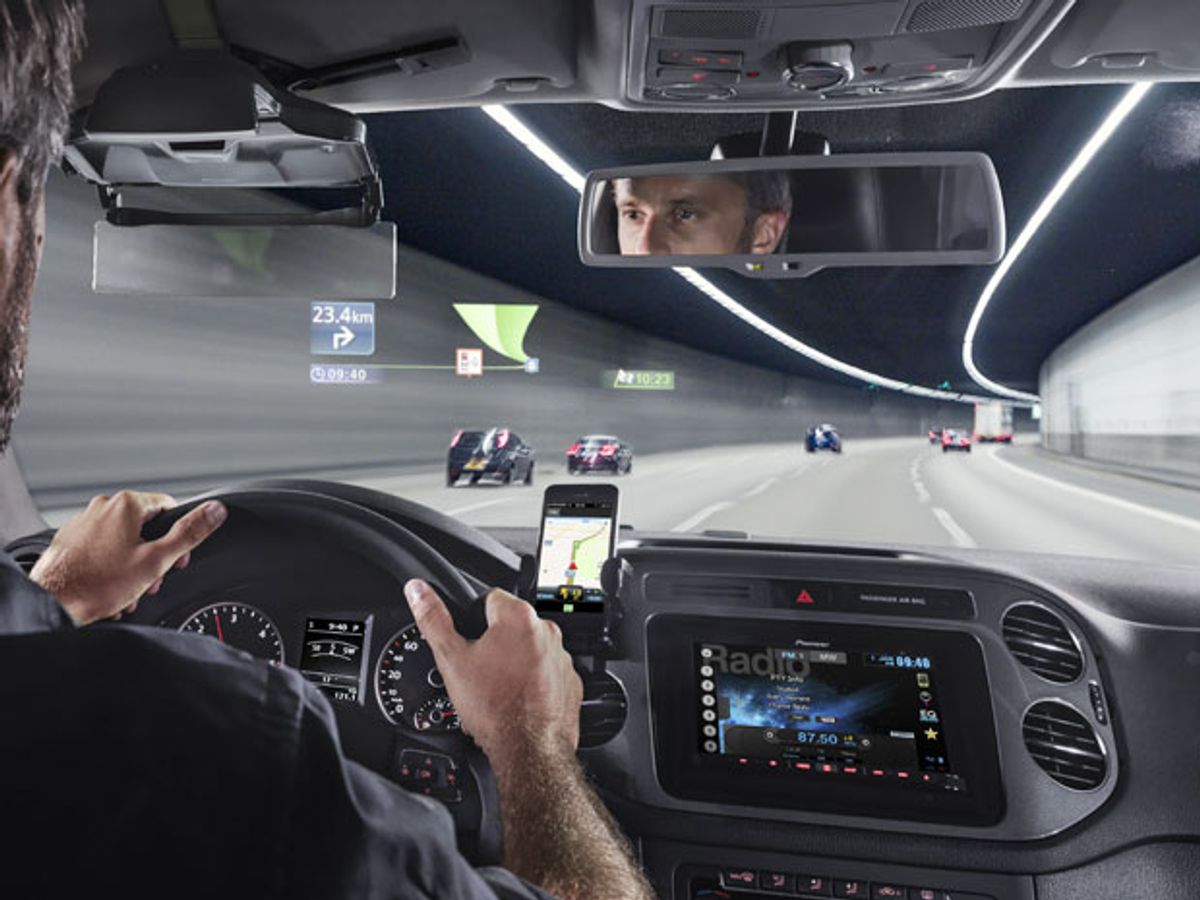Heads Up Displays (HUDs), once the domain of fighter pilots and luxury car drivers, now come in a clip-on variety affordable to a much wider market. The systems project information on to a see-through screen to help keep their users’ attention outside the vehicle. But until now, such clarity of mind never came cheap: BMW charges over US $1000 for its built-in HUD system.
At this week’s Frankfurt Motor Show in Germany, several cheaper alternatives were on offer. Car accessory maker Pioneer showed off its NavGate HUD, which it will sell in Europe starting in October. The HUD uses Texas Instruments’ DLP projector instead of the more expensive laser found in a Japanese-market predecessor. That move shaves a few hundred dollars off its cost, but it still comes through at €699, or $927. Navigation system maker Garmin last month announced a dashboard-mounted HUD display for $150.
Unlike built-in HUDs systems, these after-market versions require drivers to provide a smartphone and to download separate applications (an additional $50 in Garmin’s case). But the ubiquity of smartphones is helping accessory makers to nip at the heels of car manufacturers in yet another product range. And for the DIYers, there’s always Lifehacker.
The main reason for using a HUD is to minimize the time it takes a driver to refocus their attention on the road after consulting the instrument panel. The NavGate clips a small see-through projection screen to the sun visor, so drivers must glance up at it, similar to how they glance at the rear-view mirror. Pioneer claims the image it projects appears to be 3 meters from the driver. At first glance, I found the image to appear more like the information some cars display in their rear-view mirrors. According to Pioneer’s product planning manager Geert Verhoeven, switching between the virtual image and the road beyond gets more fluid with practice. Garmin’s offering requires drivers to stick a transparent plastic to the inside of their windshields. The sheet prevents the projected light from getting distorted by run-of-the-mill windshield glass. Custom windshield glass is one of the major components of the cost of built-in HUDs.
HUD implementation will probably also change as more competitors enter the market. A 2008 study found that higher-located HUDs, such as Pioneer’s enabled faster braking reaction times than lower-located HUDs, such as many built-in HUDs and Garmin’s. But both were still slower than just focusing on the road. HUDs may improve drivers’ ability to multi-task, but there may always be an attentional price to pay.
Other mysteries about HUDs displays abound. A Nissan-University of Michigan study (pdf) of a dozen drivers responded fastest to warnings located front and center on the windshield.Harder to explain is why the volunteers took much longer to respond to warnings in the top right and bottom left corners of their field of vision than the top left or bottom right corners or that their preferred location for the HUD, right of center, was among the worst-performing locations.
There is room for rigorous studies of the best way to implement HUDs. Maybe carmakers and accessory makers competing to reach a wider range of drivers will fund those studies.
Photo: Pioneer
Lucas Laursen is a journalist covering global development by way of science and technology with special interest in energy and agriculture. He has lived in and reported from the United States, United Kingdom, Switzerland, and Mexico.



